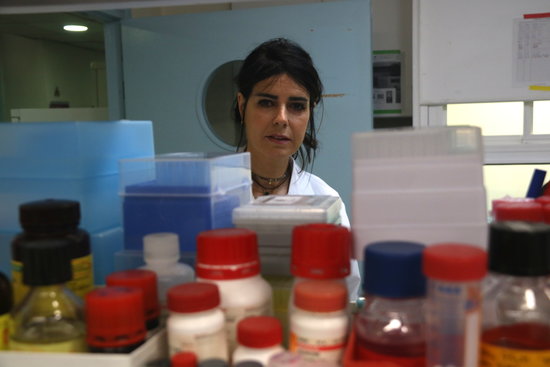New studies boost medical research in Barcelona
Teams of scientists from two hospitals in Catalan capital publish work showing potential breakthroughs in cancer and heart treatments

It's been a busy few days for Barcelona's medical community with a number of scientific breakthroughs announced from some of the country's top research groups, such as the findings of two studies, one on preventing cancer and one on cardiac aging.
On Tuesday, a team of researchers from the Cancer Program of the Hospital del Mar Medical Research Institute (IMIM) announced that they had identified an enzyme called USP27X, which is key in the development of cancer.
In the study, published in the 'Cancer Research' magazine, the scientists carried out genomic analysis to find new regulators of the Snail1 protein, a main switch in tumors.
The researchers showed the fundamental role the USP27X enzyme plays in controlling the proliferation and formation of tumors in breast cancer, offering the potential to develop new anticancer medicines. According to the study, the USP27X enzyme, which raises the stability of Snail1 and allows tumor cells to begin the process of epithelial–mesenchymal transition (EMT). This mechanism gives the tumor cells the capability to invade neighbouring tissues and form cancers, as well as raising the resistance to drugs.
"If we inhibit USP27X, we can regulate the levels of Snail1, and therefore control its negative effects in proliferation, invasion and metastasis," says Doctor Víctor M. Díaz, the head of the research team, who adds: "USP27X is an enzyme and we can therefore design inhibitors that in the future will be able to restore Snail1 levels and block the EMT."
The researchers believe that new medicines designed to inhibit the activity of USP27X could have a promising future for fighting these types of cancer. The group is currently working on finding molecules that can inhibit USP27X and reverse the negative effects of Snail1.
Preventing heart failureAlso this week there was another medical breakthrough in Barcelona, but this time on the mechanism that causes cardiac aging, by researchers at the Vall d'Hebron Research Institute (VHRI).
Using heart samples from patients of different ages in the Vall d'Hebron hospital, samples from aging mice and in vitro cellular models, the researchers found that heart muscle cells suffer a "chemical attack" due to a major release of calcium that reduces their functioning.
The accumulation of calcium causes the cells to lose the respiratory capacity needed to generate energy efficiently and, therefore, the heart becomes more vulnerable to heart failure.
According to Marisol Ruiz-Meana, the head of the study, it is the first time that cardiac aging has been identified in these terms, rather than due to oxidative changes, and she is confident it can lead to the development of medicines to help "prevent glycative damage," either by reducing the processes that cause the calcium accumulation or by stimulating the endogenous mechanism of "detoxification."
For Ruiz-Meana, this is the "most complex" part, transferring the findings to clinical practice, and the researcher says the best work might be done on preventing glycation, which causes the accumulation. She also says it is "difficult" that a healthy lifestyle can have an effect, and that the best route might be developing medicines.